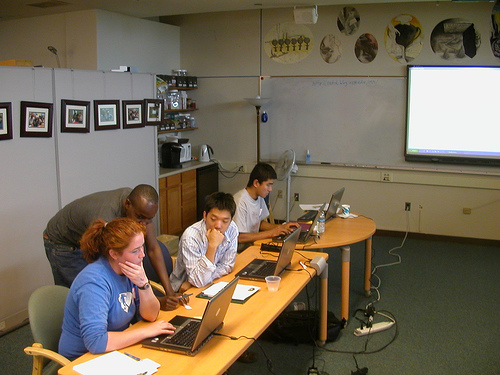7 School Tools For Making Your School More Digital
Students growing up in the digital ag e are likely to engage with digital technology in more and more aspects of their life. Part of the role of schools is to prepare students for the rapidly changing world which is quickly becoming more digital every day as new tools emerge to replace things that traditionally didn’t require the use of computers. Here are 7 tools that schools can use to become more digital.
e are likely to engage with digital technology in more and more aspects of their life. Part of the role of schools is to prepare students for the rapidly changing world which is quickly becoming more digital every day as new tools emerge to replace things that traditionally didn’t require the use of computers. Here are 7 tools that schools can use to become more digital.
1. Microblogging
Twitter, has become a popular new communication tool that can be really useful if used the right way. Many teachers, school administrators, and others share valuable information on Twitter via 140 character “Tweets”. One of the most important aspects of Twitter is its integration with SMS, so that users of Twitter can receive messages from people they follow on their cell phones, which almost all teachers, students, and parents carry with them. A principal of a school can send out important messages which can be received by all followers. Twitter also makes it easy to send direct messages to individuals that will be sent to their cell phone as well as their Twitter account that can viewed in a browser.
2. Online school calendars
Calendars are a tool that been used for thousands of years and an online version of the calendar can make calendars more useful. Online school calendars can be accessed from any computer with an internet browser and can be updated in real time when changes occur. This is a major upgrade from a paper based calendar that is usually in one location and can only be updated when a new calendar is printed out and sent out. An online calendar can also provide much greater detailed information, help organize and manage all the schools events, send information to external personal calendars, and many more things that paper calendars can not do.
3. Social networks
Social networks allow for effective communication between groups of individuals online. Facebook for instance allows the creation of groups where individuals can post information, have group discussions, or interact with each other. Yes, there are opportunities for wasting time, but these are outweighed by the benefits of the facilitation of collaboration and communication. Schools can even create their own social networks using tools like Ning.
4. Blogging
Blogging has democratized the publishing of content so that now anyone can write and publish content that will be read by as many people who are interested. Many teachers write blogs to discuss issues in education, share useful educational resources, or engage with students and parents. Students can improve their writing skills by creating their own blogs about topics that they care about. Some free tools that help easily create and publish blogs are Blogger, Edublogs, and WordPress.com.
5. Digital books
There are many advantages of switching to a digital format for books. A digital text book or book is much lighter to carry, which reduces the heavy weight many students carry on their backs. They can be updated more frequently and less expensively when information changes. Digital content also tends to be less expensive, as it reduces the publishers costs to distribute. Many classic books are available for free in digital format. One school has even replaced their entire library with a set of Kindles.
Digital books can be read on laptops, the iPod touch, netbooks, or eReaders like the Kindle or Nook. With the Kindle, students can get access to almost any book in about a minute as well as preview a vast library. The Nook allows a sharing feature so books can be shared between devices for a limited time for certain titles.
6. Wikis
Most people know about Wikipedia, the community driven encyclopedia, but Wikis also have tremendous potential as a collaboration tool. Sites like WetPaint allow you to create a free wiki for your school, a school project, etc. Users can add, edit, or view content to these wikis which can be great for collaboration and sharing information.
7. Online Video/ Podcasts
Students have unprecedented opportunity to broadcast their ideas and creativity by creating videos or audio recordings and publishing them for free on sites like YouTube or Podbean for audio. Students can produce shows, movies, or speeches that can be distributed to a worldwide audience. Some students created a rap video about math that has received over 3 million views. Using Ustream, teachers could broadcast a live recording of a lecture. There are also tons of free online lectures from top universities covering various subjects that are available at Academic Earth, YouTube, and iTunesU.
Can you think of additional tools to add to this list?
Photo by http://www.flickr.com/photos/zappowbang/ / CC BY 2.0